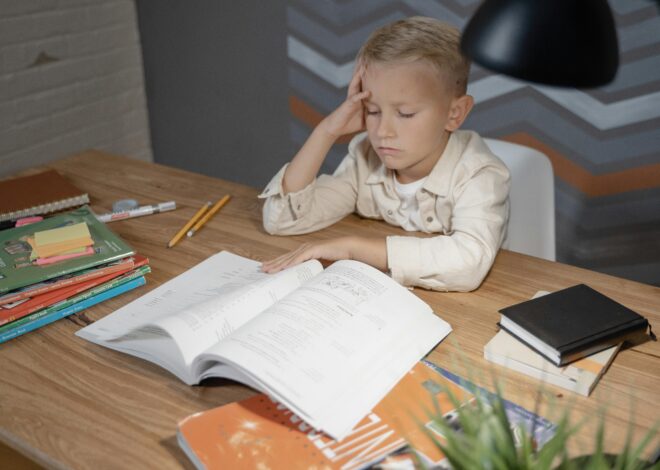
The Morning Routine That Changed Everything
The Morning Routine That Changed Everything
I’ll never forget the morning Sarah walked into my office looking like she’d survived a natural disaster. Her coffee-stained shirt told one story, but her eyes told another — the kind of exhaustion that sleep alone can’t fix. “I yelled at my six-year-old about his shoes,” she said quietly. “Again. Before 7 AM. I’m becoming the kind of mom I promised myself I’d never be.”
If you’ve ever found yourself in a similar moment — standing in the wreckage of another chaotic morning, wondering how something as simple as getting out the door became a battlefield — you’re not alone. The truth is, mornings have become the pressure point where modern family life either finds its rhythm or falls apart. But here’s what changed everything for Sarah, and what might just transform your mornings too: it wasn’t about waking up earlier or having better organizational skills. It was about understanding what mornings actually mean in the emotional ecosystem of your family.
Why Mornings Feel Like Emotional Minefields (And Why That’s Actually Normal)
Here’s something most parenting books won’t tell you: morning chaos isn’t really about the shoes, the backpack, or even the time crunch. According to research from the American Psychological Association, nearly 48% of parents report that morning routines are their most stressful daily interaction with their children. That’s because mornings aren’t just logistical challenges — they’re emotional transition zones where everyone in your family is trying to regulate their nervous system while shifting from rest mode to performance mode.
From a family systems perspective, your morning is actually a co-regulation event. Your child isn’t just being “difficult” when they melt down over the wrong cereal — their developing brain is genuinely struggling to manage the activation energy required to face a full day. And when you’re running on empty yourself, you can’t be the calm nervous system they’re borrowing from to find their own equilibrium. It’s like two people drowning trying to save each other.
The morning routine that changed everything isn’t about controlling your kids better. It’s about creating a system where everyone’s nervous system gets what it needs to start the day feeling safe, connected, and capable. Let’s talk about how.
The Five Tools That Transform Morning Chaos Into Connection
What Sarah discovered — and what hundreds of families I’ve worked with have proven — is that small, intentional shifts in how we structure and approach mornings create ripple effects that last all day. These aren’t rigid rules; think of them as experiments in finding what helps your unique family thrive.
Tool #1: The 15-Minute Buffer
This is the game-changer nobody wants to hear but everyone needs: wake up 15 minutes before your kids do. Not to do more tasks, but to do one thing for your nervous system — drink your coffee in silence, stretch, journal three things you’re grateful for, or just breathe. You can’t co-regulate a dysregulated child from a dysregulated state. This isn’t selfish; it’s the emotional equivalent of putting on your own oxygen mask first.
Tool #2: The Connection Moment
Before anything else happens — before screens, demands, or logistics — spend 2-3 minutes in pure connection with each child. Cuddle, tell a joke, ask about their dreams, play a quick silly game. Attachment research shows that children who feel emotionally “filled up” in the morning cooperate more naturally because their attachment system isn’t in alarm mode. Think of it as preventive medicine for power struggles.
Tool #3: The Visual Routine Chart
Executive function skills (the brain’s ability to plan and sequence tasks) don’t fully develop until the mid-20s. Your seven-year-old genuinely forgets what comes next. A simple visual chart with pictures or checkboxes transfers the “remembering” job from you to the system. Suddenly, you’re not the nagging villain — you’re just pointing to the chart and asking, “What’s next on your list, buddy?”
Tool #4: Choice Within Structure
Kids need autonomy to cooperate, but too many choices create overwhelm. The sweet spot? Bounded choices. “Do you want to get dressed before or after breakfast?” “Which shoes — the red ones or the blue ones?” This gives their developing prefrontal cortex a sense of control without the executive function overload of open-ended freedom.
Tool #5: The Repair Ritual
Here’s the real magic: build in a 30-second repair moment before anyone leaves the house. If the morning went sideways, take a breath, get down at eye level, and say something like, “That was hard for both of us. I love you. Let’s try again tomorrow.” Research in Emotion-Focused Therapy shows that repair is more important than perfection. Your kids need to know that relationship ruptures don’t mean relationship failure.
| Tool | What It Does | How to Try It |
|---|---|---|
| The 15-Minute Buffer | Regulates your nervous system before the day begins | Wake up 15 minutes early for one calming ritual — coffee, breathing, gratitude, or stretching |
| The Connection Moment | Fills your child’s emotional tank to prevent power struggles | Spend 2-3 minutes in playful connection before any demands — cuddles, jokes, or silly games |
| The Visual Routine Chart | Transfers executive function load from parent to system | Create a simple picture chart of morning tasks; point to it instead of repeating instructions |
| Choice Within Structure | Gives autonomy without overwhelm | Offer two acceptable options: “Dressed before or after breakfast?” “Red shoes or blue?” |
| The Repair Ritual | Teaches that mistakes don’t break relationships | Before leaving, acknowledge hard moments: “That was tough. I love you. We’ll try again tomorrow.” |
Your Morning, Your Way
Three months after Sarah started experimenting with these tools, she sent me a text: “We were five minutes early today. I didn’t yell once. I didn’t even know that was possible.” But what struck me most was what she said next: “It’s not that everything is perfect now. It’s that I finally feel like the mom I actually am, not the stressed-out version I was becoming.”
That’s what the morning routine that changed everything actually changes — not just your schedule, but your sense of who you are in your family. You’ve already taken the hardest step by caring enough to look for better ways. Pick just one of these tools to try this week. You don’t need to overhaul your entire life before sunrise tomorrow. Small shifts in how you start the day create big changes in how your family feels about each other. And that? That changes everything.



